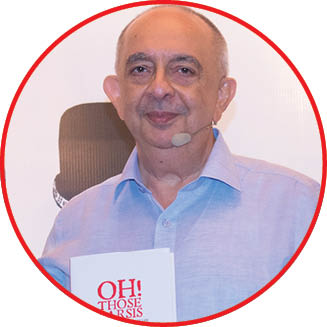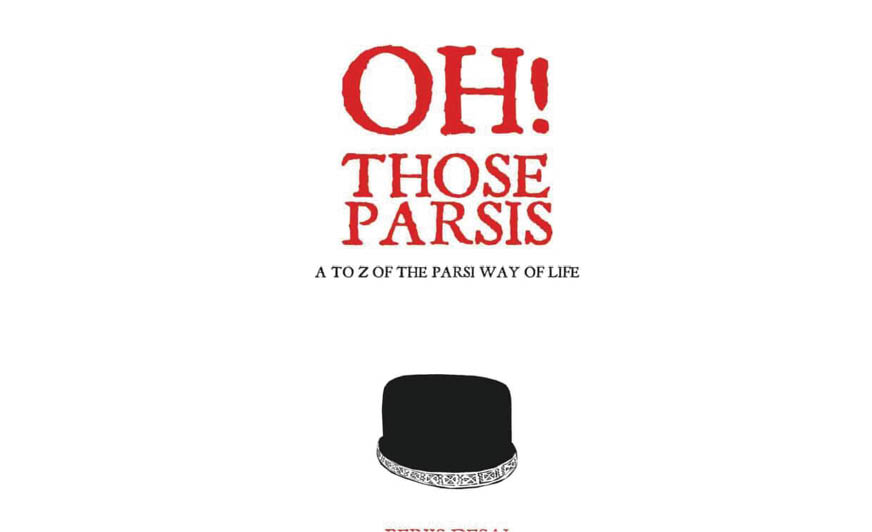Why Tiny Udvada Scores Over Sprawling Navsari!
 Navsari and Udvada share a rather uneasy relationship. After all, the Iranshah, before He was enthroned in Udvada in 1742, had been in Navsari, for three long centuries (1419 to 1740) until the Pindhara (plundering tribe) menace forced His migration. But for this quirk of history, Udvada would have been one of the faceless 18,225 villages of Gujarat, observe the Nosakras sardonically. He has been with us too for nearly 300 years, and will continue to do so till eternity, counter the Udvadias. Giant Navsari (population, 163,000; 2011 census) is a district; tiny Udvada (5,897) is a hamlet. However, ask Parsis in New Zealand and Nova Scotia – all know Udvada but only a few are as aware of Navsari. After all, it matters where the King presently resides.
Navsari and Udvada share a rather uneasy relationship. After all, the Iranshah, before He was enthroned in Udvada in 1742, had been in Navsari, for three long centuries (1419 to 1740) until the Pindhara (plundering tribe) menace forced His migration. But for this quirk of history, Udvada would have been one of the faceless 18,225 villages of Gujarat, observe the Nosakras sardonically. He has been with us too for nearly 300 years, and will continue to do so till eternity, counter the Udvadias. Giant Navsari (population, 163,000; 2011 census) is a district; tiny Udvada (5,897) is a hamlet. However, ask Parsis in New Zealand and Nova Scotia – all know Udvada but only a few are as aware of Navsari. After all, it matters where the King presently resides.
Like both his parents and all of his grandparents, this columnist would have been born in Navsari (if his mother’s water bag had burst 10 hours later). He spent every school vacation in the dusty mohollas (neighborhoods) of Navsari and was ordained priest in the Vadi Daremeher where he learnt everything except religion (that is another story). Despite our bias, over the years, we have become sufficiently dispassionate to evaluate the places fairly. For the last few years, we do our annual pilgrimage to both the Atashbehrams on the same day, which sharpens the perspective.
Its many Parsi mohollas (like Dastur Vad and Kanga Vad and Baria Vad) divided into two sections of the town, called Motafalia and Malesar (the former was slightly elitist and snootier), made Navsari a bustling Parsi town. Most houses in the moholla were Parsi occupied. A non-Parsi occupied house stood out distastefully like a sore thumb. If a Parsi died, the moholla was cordoned off to prevent any juddin entry during the paidast and uthamna. During the four days (sometimes six) celebration of a marriage, the non-Parsi service providers were, of course, permitted (to serve food, to play the horrendous ‘Naan Khatai’ band or the slightly less offensive ‘takor-khanu’ from Surat, and engage in other such menial activities). You could have spotted a black swan but not a non-Parsi guest. The other communities implicitly and non-grudgingly accepted the superiority of the Parsis (even a Parsi transgender was elected as municipal councilor, defeating a highly respected Gujarati lawyer – that too in the ’60s).
And then suddenly in the ’80s, things crumbled. Like Pompeii, Parsipanu in Navsari was destroyed. Mohollas still retain their names, but have lost their character. A Parsi occupied house now stands out like an arthritic thumb. No moholla is cordoned, and there is hardly a marriage to celebrate. Deaths, of course, are many – of lonely, old spinsters and childless widows. Parsis are regarded as harmless eccentrics; the social superiority has long since dissipated. Some Parsi community housing complexes do exist, but are hardly distinguishable from the jungle of apartment buildings, spawned all over Navsari as a result of unregulated development. The vadis (mini orchards) of Lunsikui – where every evening, at impromptu clubs, old Parsi men poured ‘prepared’ tea from large aluminum kettles into modest looking glasses and dunked humungous batasa biscuits in the glass, along with salacious male gossip, and where many decades ago, the venerable Sir Pherozeshah Mehta had stayed at the ‘Dhadaka-no-bungalow’ to defend the honor of a fellow advocate called Merwanjee Vakil, in what came to be known as the ‘Lamp Case’ – have now been replaced by semi attached row houses, without any personality or trees, all in a highly polluted environ.
Udvada, on the other hand, is frozen in time. The precinct around the Iranshah remains very much Parsi. An exclusive little conclave. Unlike the cacophony outside the Navsari Atashbehram (though sublimely peaceful within), there is a respectful silence around the Iranshah and the row of all Parsi owned houses in the adjoining lane. Even the vendor on the cycle, selling home-made ice cream, markets his produce in hushed tones. The largish housing complex, constructed by a Parsi builder for Parsis only, is quiet. In the monsoon, the swell of the Arabian Sea looks sinister, from the balcony of one of the buildings in this complex. If you walk in a straight line on the beach, you can reach Nargol or even Valsad. From this balcony, you can see the ruins of a demolished building, which was once the Majestic Hotel known for its sea views and sumptuous breakfasts. The family, which owned it, dissipated; a lonely matriarch in her final days lost her mind in a tragic end to a bustling hotel. One of its competitors, the King’s Hotel, also on the beach, vanished similarly. The Globe, owned by the Sidhwa family, survives with some of its gargantuan rooms and fried boi (river fish). We remember a middle-aged Bapsy Sidhwa instructing us to rub off the rakhiya (holy ash) from our forehead, lest some juddin see or touch it. The upstart Ashishvangh Hotel is the Globe’s only competition, if you exclude the spanking new Sir J. J. Dharamshala. If you desire a break from the heavy duty carnivorous feasts, you can obtain a tiffin containing the most delicious Gujarati meal. The same establishment also sells home ground spices at rock bottom prices (what on earth is GST?).
Navsari, on the other hand till recently, never had a single decent hotel. Jamshed Baug and Sorab Baug are, of course, great value for money and kept quite neat and clean; but no competition to the famed Parsi hotels of Udvada. Only once, we were compelled to spend a very uncomfortable night in some horrific Navsari juddin hotel after dumping the bedsheet and the pillow cover which had retained various remnants of the previous occupants. In its heydays, Navsari had the small Tarota bazar near the Atashbehram, and the larger market, 10 minutes away, where the Kolah clan, competing within, sold ice-cream, sarko (vinegar), pickles including garabh nu achaar, sandalwood, and other items of rural cuisine; along with many other Parsi service providers, all of whom have disappeared.
Udvada is firmly embedded in the community consciousness as the mandatory pilgrim place for paying obeisance to the Iranshah. The Navsari Atashbehram, despite its more splendid architecture, is a distant second. More critically, Navsari has lost its Parsiness. In Udvada, it is palpably evident. Elementary, my dear Watson, says the traditionalist. Uniqueness can be preserved only in an exclusive ghetto; otherwise, in a large set-up, one’s identity is bound to be obliterated. In our old age, we have to sheepishly agree.
- તમારી જાત પર વિશ્વાસ રાખો અને લડ્યા વગર હાર ન માનવી જોઈએ, સકારાત્મક વિચારસરણી દરેક સમસ્યાને દૂર કરી શકે છે - 23 November2024
- સંજાણ ડેની 104માં વરસની ઉજવણી - 23 November2024
- 2024 ઈરાનશાહ ઉદવાડા ઉત્સવ આવી ગયો! - 23 November2024
